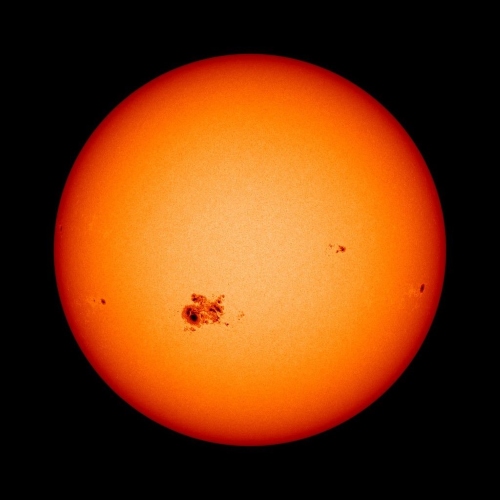What is a Partial Solar Eclipse?
A partial solar eclipse happens when the Moon moves between the Sun and Earth but does not completely block the Sun. In a partial eclipse, the sun appears as a shape like a curved or having a piece "missing" from it. Unlike a total solar eclipse, where the Moon completely covers the Sun, this type of eclipse does not create total darkness.

Source:NASA
Tomorrow’s partial solar eclipse (https://t.co/PhzIeiqz3t) is a rare sight… but #DYK that total solar eclipses are more common in the northern hemisphere than in the southern hemisphere?
— NASA Sun & Space (@NASASun) March 28, 2025
Here’s why ⬇️
🧵1/10
(📸 credits in alt text!) pic.twitter.com/niDWJHOrVQ
Where Will It Be Visible?
The partial solar eclipse on March 29, 2025, will be visible from different parts of the world, including:
- North America
- Europe
- Africa
- Northern Asia
- Greenland
- Iceland
- Parts of the Atlantic and Arctic Oceans
In many parts of the Americas, the eclipse is already in progress at sunrise. In Europe and Africa, it will be visible during the morning or afternoon.
In how many cities will this partial Eclipse be seen, and what will be the Eclipse Timing?
Here are some locations where the eclipse can be seen, with local times for when the event will begin and end:
- New York, USA: Starts at sunrise, maximum at 6:46 AM, ends at 7:04 AM
- London, UK: Begins at 10:07 AM, maximum at 11:03 AM, ends at 12:00 PM
- Berlin, Germany: Begins at 11:32 AM, maximum at 12:19 PM, ends at 1:07 PM
- Paris, France: Begins at 11:08 AM, maximum at 12:01 PM, ends at 12:56 PM
- Lisbon, Portugal: Begins at 9:37 AM, maximum at 10:31 AM, ends at 11:27 AM
- Montreal, Canada: Starts at sunrise, maximum at 6:42 AM, ends at 7:13 AM

Source:NASA
How to Watch the Eclipse Safely?
Looking directly at the sun can cause eye damage during a solar eclipse. Here are safe ways to view it:
- Eclipse Glasses: These are special glasses designed to block harmful sunlight. Regular sunglasses are NOT safe.
- Solar Filters for Cameras or Telescopes: If you are using binoculars, telescopes, or cameras, make sure they have proper solar filters.
- Pinhole Projectors: You can make a simple pinhole projector by poking a hole in a piece of cardboard and projecting the Sun’s image onto a flat surface.
- Tree Leaves Projection: Sunlight passing through small gaps in tree leaves creates natural eclipse projections on the ground.
Some Interesting Facts About Solar Eclipses
- Even on a normal day, sunspots can be seen on the Sun using eclipse glasses.
- During a solar eclipse, shadows appear sharper and can create unique crescent-shaped patterns on the ground.
- A total solar eclipse will occur later in 2026, giving people another chance to witness a breathtaking celestial event.
This partial eclipse is an exciting event for skywatchers around the world. If you plan to observe it, make sure to follow proper safety measures!
Comments
All Comments (0)
Join the conversation